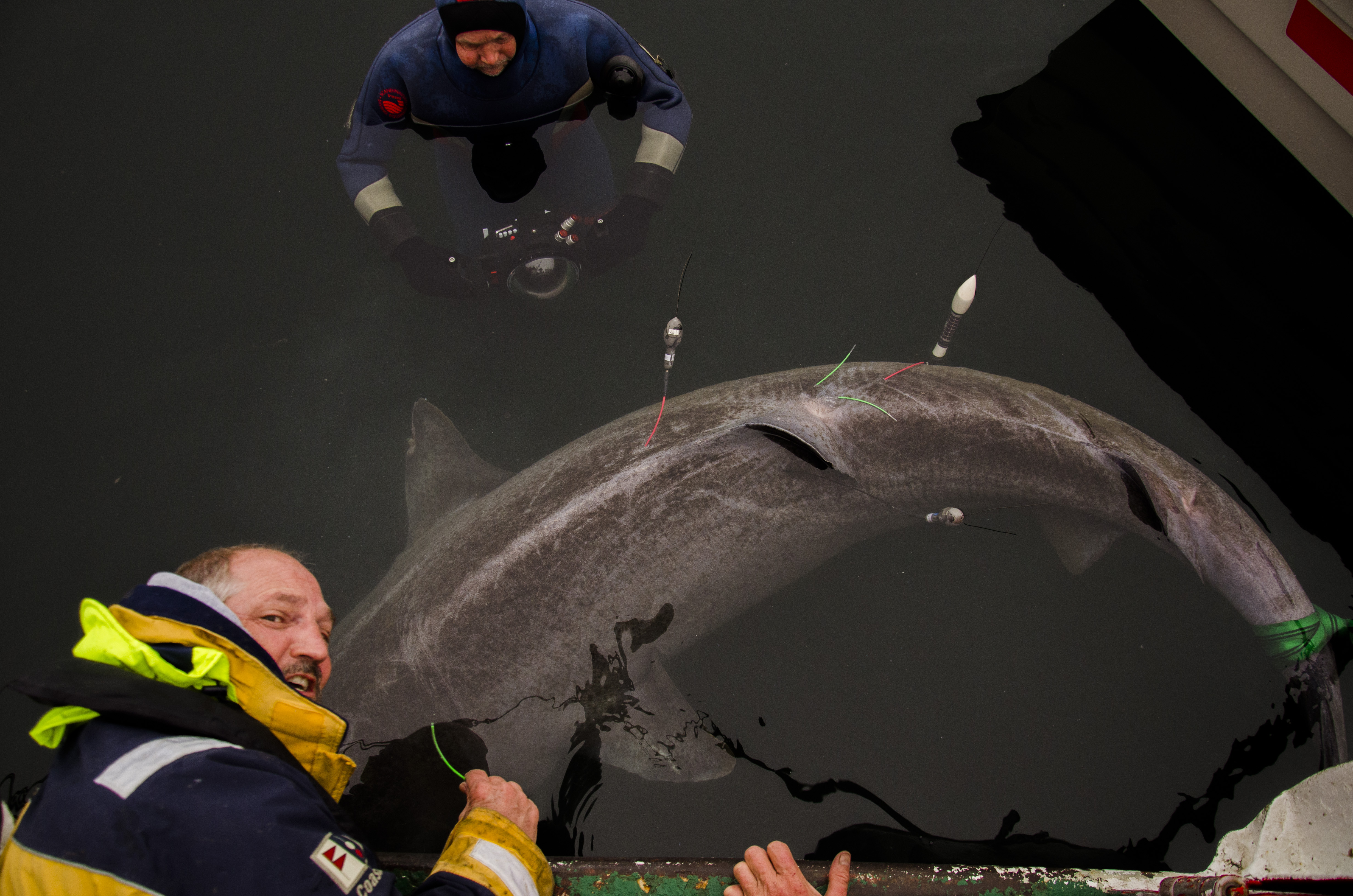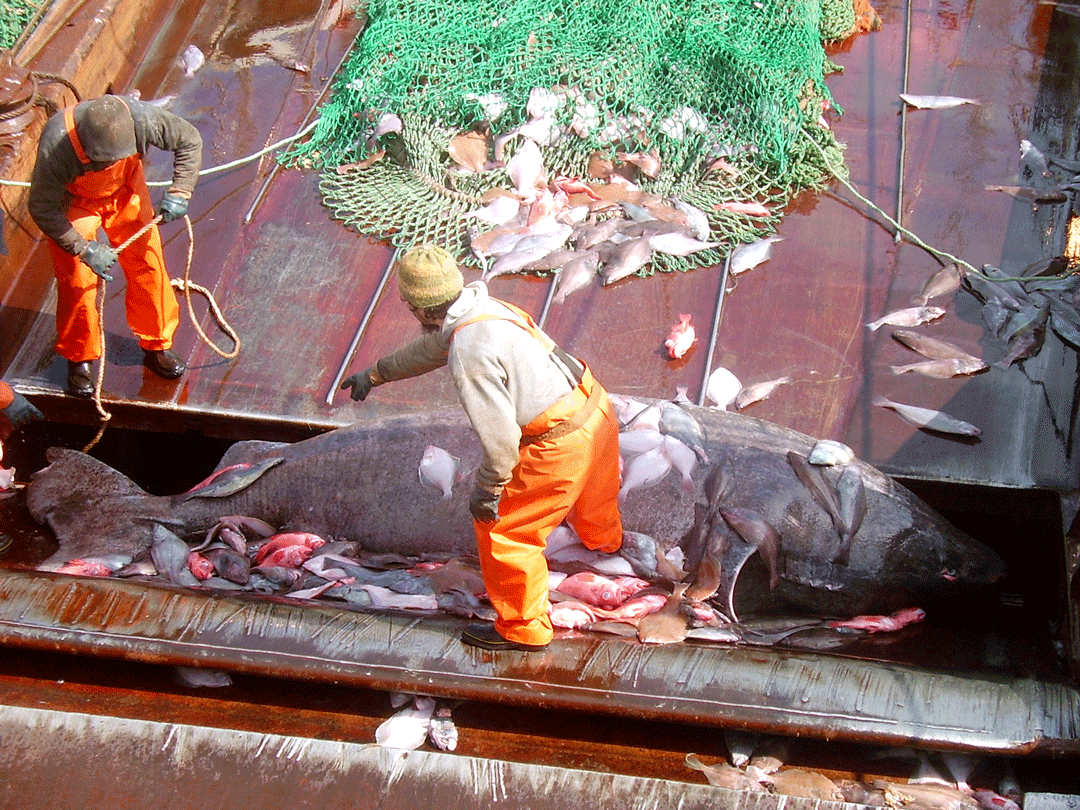Pushing for protection
Member countries of the Northwest Atlantic Fisheries Organization (NAFO) recently adopted new measures to protect Greenland sharks and address thorny skate fisheries. Their policies, however, still fall short of scientific advice. We chat to Sonja Fordham, president of Shark Advocates International, about the advances and where we should be heading to better protect Greenland sharks and thorny skates.

- Achieving a ban on intentional catches of Greenland sharks (Somniosus microcephalus) is an encouraging step! How long has this been in the pipeline, and what do you think precipitated its acceptance?
Focused attention on protecting Greenland sharks started in earnest just two years ago, so the path to conservation measures was relatively short when compared to other similar actions by international fishery management organizations. The process was jumpstarted in 2016 after a scientific paper estimating that Greenland sharks can live several hundred years sparked global media attention (Nielsen et al. 2016), amounting to one of the biggest shark news stories of the decade. With that media coverage came calls for species protection that were strong and numerous, but rather vague. We flagged the longevity findings for fishery managers who had the power to act for the fisheries that take Greenland sharks. The US then led NAFO to direct its Scientific Council to undertake a two-year species status review which culminated with fishery management advice being presented at the NAFO annual meeting last month.
A female Greenland shark, 2.9 metres in length, with three satellite tags attached As these sharks mostly occupy waters where no light is available, measurements of light intensity at a certain depth at a certain time cannot be used to estimate the geo-location (as it can, for example, with tunas) To enable researchers to learn more about Greenland shark migration routes, three tags mounted on the sharks release at different times. Photo © Julius Nielsen
- The measures adopted still fall short of scientific recommendations: which of these outstanding steps would you most like to see adopted in the coming years? What would full protection of Greenland sharks look like?
The member countries of NAFO agreed to a ban on the intentional take of Greenland sharks from international waters, along with other requirements for all NAFO countries to maximize live release of accidental catches and minimize associated harm. The measure is a solid first step, but still falls short of scientists’ advice for a complete ban on retention and landing of the species, as proposed jointly by the EU and US.
Specifically, the action NAFO’s taken doesn’t directly apply to fishing within countries’ own waters (out to 200 miles), nor does it cover incidental catches. We argue that allowing exceptions to keep accidentally caught Greenland sharks could lead to more accidents, depending on market demand. Instead, we need incentives to discourage all interactions with this species. That means prohibiting retention regardless of circumstances, as other international fisheries bodies and countries around the world have done for many other vulnerable shark and ray species.
We also highlight scientists’ warnings that generally docile, slow-moving Greenland sharks often appear dead, when in fact they’re still alive. Countries that allow retention of dead sharks may well be inadvertently allowing take of animals that could have survived if released. This is another reason to simply prohibit all retention and mandate careful, prompt release.
Based on these factors, our coalition is continuing to urge individual fishing nations to go further than NAFO and fully protect Greenland sharks in their waters. In addition, we’ll be monitoring progress under the new NAFO measures, including data collection requirements and developing the case for additional conservation measures for consideration in 2021.
In the meantime, we’re also encouraging independent scientists, tourists and divers to help improve understanding of Greenland shark status by researching and sharing information about interactions, biology, products, and trade.
A Greenland shark (Somniosus microcephalus) caught as by-catch by a bottom trawler in North Atlantic waters. Photo © Juan Vilata | Shutterstock
- The thorny skate (Amblyraja radiata) is listed as Vulnerable on the IUCN RedList but scientific advice for thorny skate fisheries wasn’t adopted by NAFO to set catch limits at 4000 tons. Will there be continued pressure to lower a catch limit that currently sits 3000 tons above recommended levels?
It’s disappointing to have to report that NAFO once again failed to align thorny skate fishing limits with the catch levels advised by scientists. Although awareness of the plight of “flat sharks” is growing, such species – especially skates – are still not receiving the public concern or conservation attention that they deserve. Thorny skates are targeted in the NAFO region and not recovering well from past overfishing, despite more than a decade of NAFO management. The saving grace is that actual catches in recent years have not exceeded what scientists say is sustainable. Without measures to restrict take to those levels, however, the species remains at risk for further depletion. In addition, skate catch reporting remains poor, which in turn hinders the type of robust population assessment needed to predict recovery at varying catch and support an effective rebuilding plan. We will continue our calls to “Elevate The Skate” in an attempt to spark citizen demands for more responsible skate fisheries management, at NAFO and in countries around the world.
Greenland Shark. © Julius Nielsen
- The push for the adoption of these recommendations comes from a number of different organisations, of which your organisation Shark Advocates International are a part. What role do you think collaboration and a cohesive message played in having some of the recommendations adopted?
Shark Advocates International works in close partnership with the Ecology Action Centre at NAFO meetings; for years we’ve been backed up by Shark Trust and Project AWARE through associated NAFO policy advocacy and public engagement efforts. Together, our four groups form the Shark League for the Atlantic and Mediterranean (www.sharkleague.org), which works to represent a variety of constituents and engage with governments of key NAFO Parties, primarily the EU, Canada, and the US. We believe that breadth improves our effectiveness; at the same time, we’re eager to expand our reach to other North Atlantic fishing countries, particularly Iceland and Norway.
